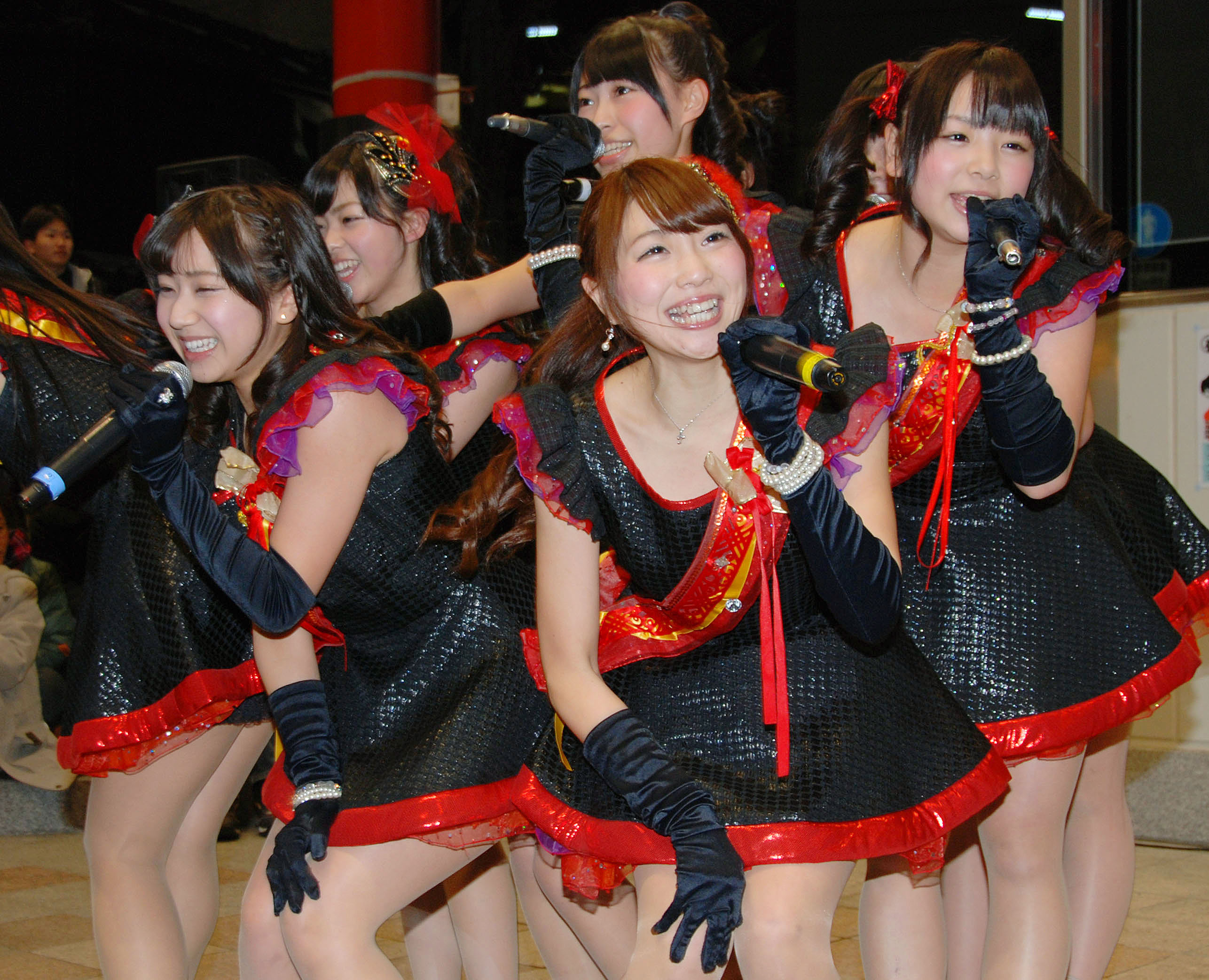They say that Japan is suffering from a major shōshika (少子化, plummeting birth rate) syndrome, but a cursory glance at the entertainment industry reveals a singular fact: The young people of this country are well and thriving, and huddled together in mass aidoru gurūpu (アイドルグループ, idol groups).
To be an "aidoru" in Japan may look easy as pie, several notches below, say, nabbing the position of prom queen in an American high school. For the record, it's grueling, often demeaning and requires sheer determination and blind discipline. Former AKB48 sentā (センター, having center position on stage) Atsuko Maeda reputedly got by on 2 hours of sleep and an average total dietary intake of just 800 calories per day. She had zero freedom or down time. Worst of all was that the notorious jimusho (事務所, agency) producing AKB and a dozen other aidoru projects scraped off more than 60 percent of her earnings before her salary ever reached her bank account. That's the official rumor. The kageno uwasa (陰の噂, unofficial rumor) is that the 60 percent is more like 85 percent.
The Japanese aidoru is a sad, complex concept and traces its roots back to the postwar years, when homeless orphans crowded around the GIs, clamoring for gum and chocolate. Having lost their parents to firebombs or on the front lines, the sensaikoji (戦災孤児, war orphans) had to learn survival skills double quick, and anyone with a knack for dancing or singing tried to get a foot in the door of a cabaret. The biggest child star of the post-war period was Hibari Misora, whose youthful kashōryoku (歌唱力, singing power) was legendary. Misora wasn't an orphan (her mother forced open doors to launch her career) but she could sing about their plight and open audience tear ducts like no other. Misora became the gold standard of the postwar entertainment industry; she was made to work like crazy and didn't get a whole lot of money for it — but she did inspire millions of young Japanese to dream of a better and brighter life.



